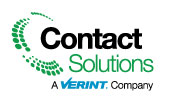Integrating IVR and WFO Data Can Improve Operations and Customer Experience
We’re all familiar with silos – those “isolated islands of data” (per Harvard Business Review) that make it difficult or impossible to share and analyze information to make better business decisions. This is particularly true in the contact center.
Silos can arise from several scenarios created by organizational culture and technology:
- proliferation of applications, particularly niche software, which don’t work together
- reliance on multiple project teams that may compete with each other
- data hoarding by departments or database administrators
- mergers and acquisitions that bring together disparate organizations with duplicative databases
Whatever their origin, data silos are a major problem, particularly in the age of Big Data and analytics. They prevent people from seeing the “big picture” that is necessary to spot opportunities, trends and problems affecting the organization as a whole. Data silos also act as barriers to collaboration, productivity and efficiency. Forrester agrees. See why...
Contact Center Data Silos
A contact center can be a poster child for data silos. That is because many contact centers rely on two important IT systems – the interactive voice response (IVR) solution on the front end of the customer service call and the workforce optimization (WFO) suite on the agent side which:
- Historically WFO and IVR do not talk to each other.
- Analytics intelligence gained from either solution is generally also viewed in silos.
Each system generates large volumes of data, such as details of individual customer interactions from the IVR (use of self-service vs. transfer to agent, number of completed calls, caller preferences, interaction details, customer details) and information on contact center agent performance (quality, productivity, workload, agent call handling, etc.) from the WFO.
Although these two data sources are important in and of themselves, their value rises exponentially when combined and analyzed as a whole. Together, they can shed light on the complete customer journey and how it is affected by back-end staffing, training and operations.
Bringing IVR and WFO together
Many contact center operations leaders recognize the disconnect between these two halves of the picture. In fact, a recent study conducted by Forrester Consulting of more than 100 contact center leaders and enterprise executives in the United States, found:
These leaders also acknowledge the desirability of consolidating and analyzing IVR and WFO data to achieve key operational goals, both for the short term and the long term.
- Higher customer satisfaction
- Better understanding of call transfer (to drive reduction in transfers to agents)
- Increased IVR efficiency
- Improved experience for agents
- Ability to react more quickly to changes in call activity/flow and bottlenecks
The Persistence of Silos
With ample evidence that combining and analyzing WFO and IVR data can drive better decisions and improve contact center operations and results, why aren’t more organizations taking steps to do this?
As mentioned earlier, software interoperability issues and entrenched processes or cultural expectations can stand in the way of data consolidation. Adding to these barriers are concerns about high costs, lack of a unified contact center strategy and uncertainty about how best to integrate the IVR and WFO data repositories.
Subscribe to this blog and get email notifications of posts that address this issue.




